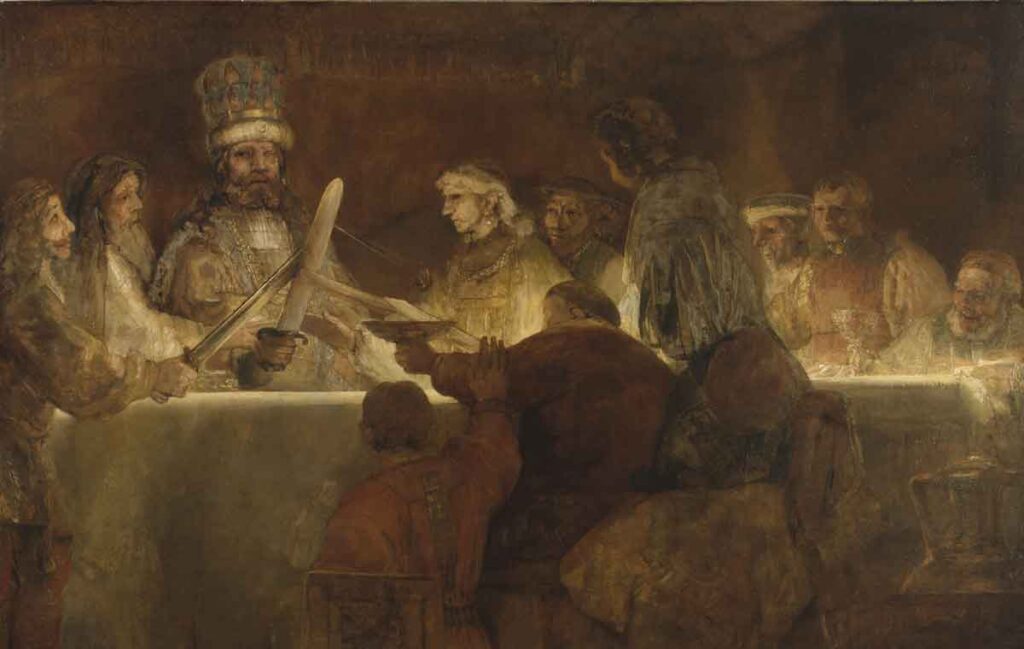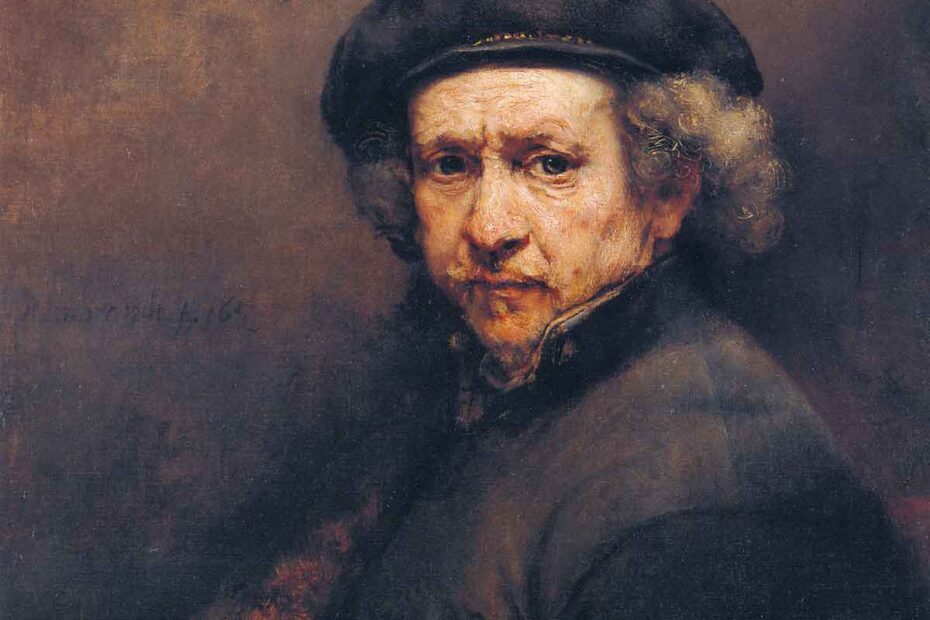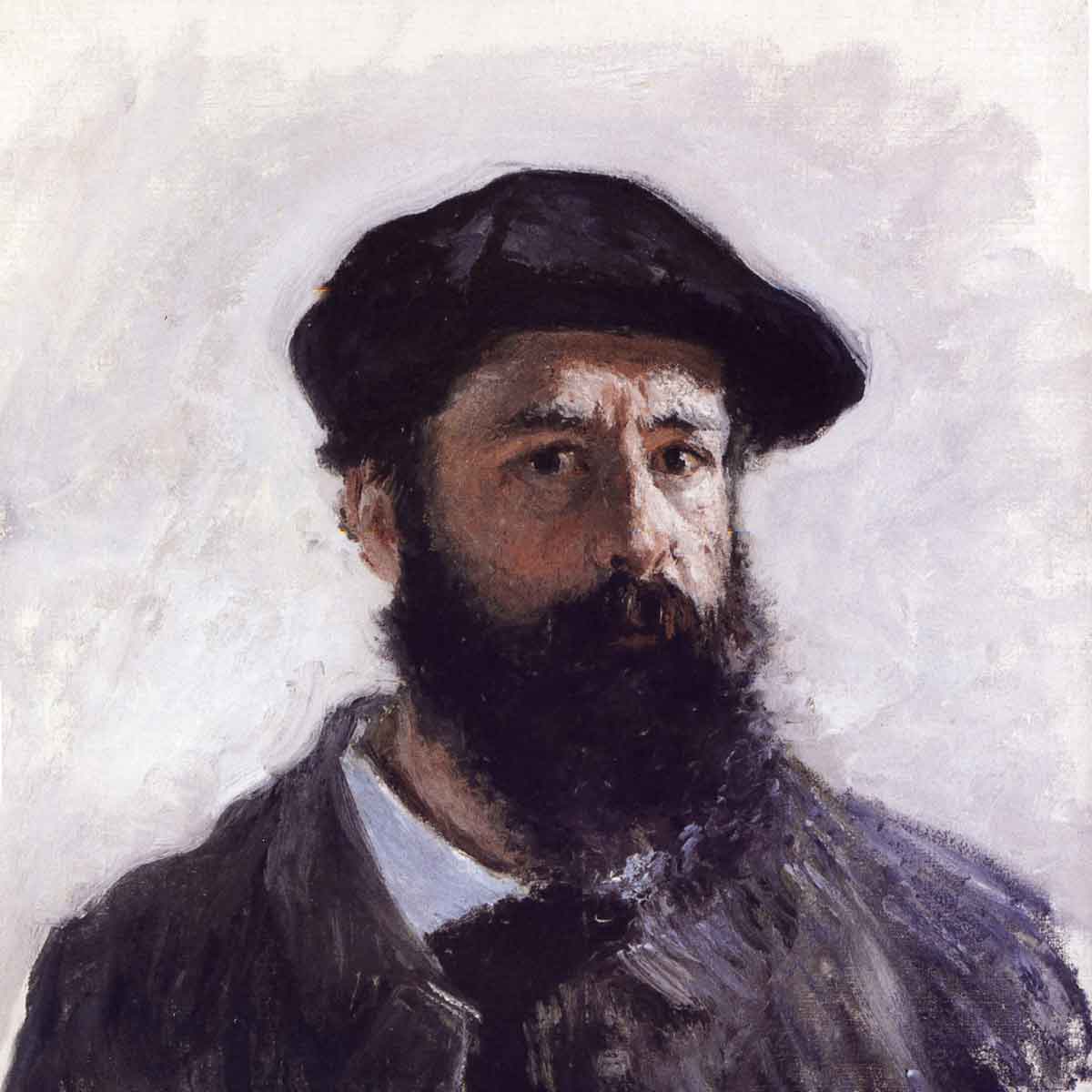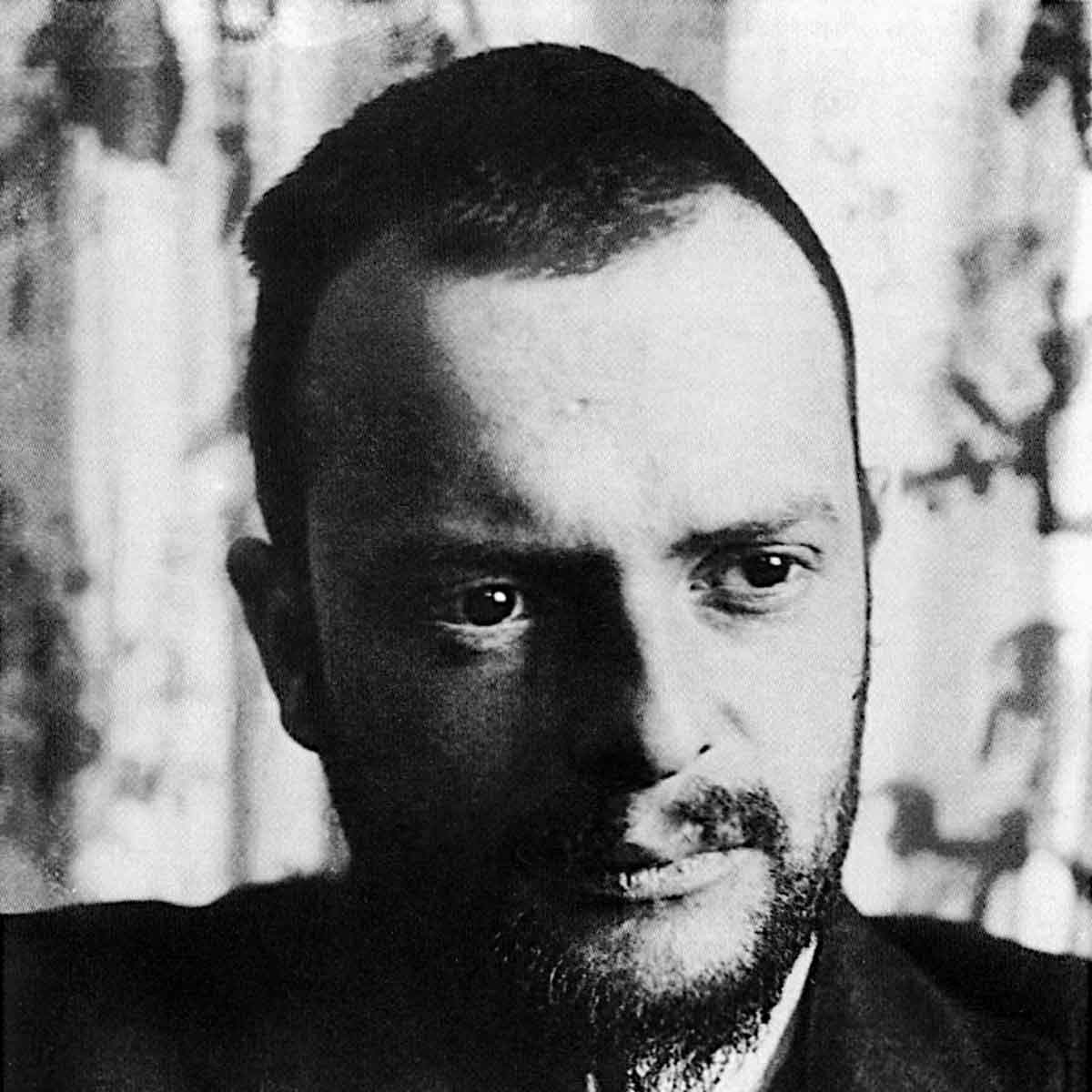The works of Rembrandt Harmenszoon van Rijn (1606-1669) are admired for their extraordinarily realistic depiction of human emotions and feelings with all their nuances, and for their brilliant use of light and shadow
The Dutch painter of the Golden Age produced a large number of paintings (more than 300 in total), but many works attributed to him for centuries are now disputed because his numerous followers and imitators created almost perfect copies of his style
In this article we have selected 10 of the Dutch artist’s most famous and outstanding works.
1- The Night Watch

The Militia Company of District II under the command of Captain Frans Banninck Cocq, also known as The Company of Sharpshooters of Frans Banning Cocq and Willem van Ruytenburch, but commonly referred to as The Night Watch (Dutch: De Nachtwacht), is a painting from 1642.
It belongs to the collection of the Amsterdam Museum, but is prominently displayed at the Rijksmuseum as the best-known painting in its collection. The Night Watch is one of the most famous paintings of the Dutch Golden Age.
The painting is famous for three things: its colossal size (363 by 437 centimeters), the dramatic use of light and shadow (tenebrism), and the perception of movement in what would traditionally have been a static group military portrait
It was completed in 1642, at the height of the Dutch Golden Age. It depicts the eponymous company on the march, led by Captain Frans Banninck Cocq (dressed in black, with red sash) and his lieutenant, Willem van Ruytenburch (dressed in yellow, with white sash)
With an effective use of light and shadow, Rembrandt directs the eye to the three most important figures in the crowd: the two men in the center (from whom the painting receives its original title), and the woman in the center left background carrying a chicken. Behind them, Ensign Jan Visscher Cornelissen carries the company colors. The figures are almost life-size.
Rembrandt has depicted the traditional harquebusier emblem in a natural way, with the woman in the background carrying the main symbols. She herself is a sort of mascot; the claws of a dead hen on her belt represent the clauweniers (harquebusiers), the pistol behind the hen represents the trefoil and she holds the cup of the militia. The man in front of her wears a helmet with an oak leaf, a traditional harquebusier motif. The dead chicken also represents a defeated adversary. The color yellow is often associated with victory.
2- The storm on the Sea of Galilee

The Storm on the Sea of Galilee is an oil on canvas from 1633 . It was formerly in the Isabella Stewart Gardner Museum in Boston, but was stolen in 1990 and is still missing
The painting depicts the biblical story of Jesus calming the storm on the Sea of Galilee, as described in the fourth chapter of the Gospel of Mark.
The painting, in vertical format, shows a close-up of Christ’s disciples frantically battling the raging storm to regain control of their fishing boat. A huge wave hits the bow and tears the sail. One of the disciples is seen vomiting overboard. Another, looking directly at the viewer, is a self-portrait of the artist. Only Christ, depicted on the right, remains calm.
The foreground treatment of the subject and the overall composition can be traced back to an engraving by Adriaen Collaert from a design by the Flemish artist Maerten de Vos. This engraving, depicting Galilei’s The Storm at Sea, was plate 8 of the 12-part Vita, passio et Resvrrectio Iesv Christ , published by Jan and Raphael Sadeler in Antwerp in 1583
Rembrandt’s painting follows the portrait format in its composition and also depicts the boat in a forward leaning position. As in the engraving, most of the space in the work is taken up by the main motif, which is the disciples in the boat struggling against the elements.
3- The Anatomy Lesson of Dr. Nicolaes Tulp

The Anatomy Lesson of Dr. Nicolaes Tulp is an oil on canvas from 1632 by Rembrandt that is kept in the Mauritshuis Museum in The Hague (The Netherlands). The painting is considered one of Rembrandt’s earliest masterpieces.
In the work, Nicolaes Tulp is shown explaining the musculature of the arm to a group of doctors. Some of the spectators are several doctors who paid commissions to be included in the painting
The painting is signed in the upper left corner by Rembrandt. This may be the first time Rembrandt has signed a painting with his first name (in its original form), rather than the monogram RHL (Rembrandt Harmenszoon of Leiden), and is thus a sign of his growing artistic confidence.
4- The Return of the Prodigal Son

The Return of the Prodigal Son (Dutch: De terugkeer van de verloren zoon) is an oil painting by Rembrandt that is part of the collection of the Hermitage Museum in St. Petersburg.
It is one of the Dutch master’s last works, probably completed two years before his death in 1669
It depicts the moment of the prodigal son’s return to his father in the biblical parable, and is a renowned work described by art historian Kenneth Clark as“a picture that those who have seen the original in St. Petersburg can be forgiven for claiming is the finest picture ever painted.”
In the painting, the son has returned home in a miserable state after a journey in which he has squandered his inheritance and fallen into poverty and despair. He kneels before his father in repentance, desiring forgiveness and the position of a servant in his father’s house, having realized that even his father’s servants had a better station in life than he did. His father receives him with a tender gesture and welcomes him as if he were his own son
His hands seem to suggest motherhood and fatherhood at the same time; the left seems larger and more masculine, placed on the son’s shoulder, while the right is softer and more receptive in gesture. Standing on the right is the prodigal son’s older brother, who folds his hands in judgment; in the parable he opposes the father’s compassion for the sinful son.
Rembrandt was moved by the parable, and produced a series of drawings, etchings, and paintings on the subject spanning several decades, beginning with an etching of 1636.
The Return of the Prodigal Son includes figures not directly related to the parable, but seen in some of these earlier works; their identities have been debated. The woman in the upper left, barely visible, is probably the mother, while the seated man, whose clothing implies wealth, may be an estate counselor or tax collector.
5- The Jewish Bride

The Jewish Bride (Dutch: Het Joodse bruidje) is a painting by Rembrandt, painted around 1665-1669.
The painting acquired its present name in the early 19th century, when an Amsterdam art collector identified the subject as that of a Jewish father giving a necklace to his daughter on her wedding day. This interpretation is no longer accepted, and the identity of the couple is uncertain. The ambiguity is accentuated by the lack of anecdotal context, leaving only the central universal theme, that of a couple united by love
Speculative suggestions have been made as to the identity of the couple, ranging from Rembrandt’s son Tito and his bride to the Amsterdam poet Miguel de Barrios and his wife. Several Old Testament couples have also been considered, such as Abraham and Sarah, Boaz and Ruth, or Isaac and Rebecca, which is supported by a drawing made by the artist several years earlier.
Although technical evidence suggests that Rembrandt initially envisioned a larger, more elaborate composition, the placement of his signature in the lower left indicates that its present dimensions do not differ significantly from those at the time of its execution. According to Rembrandt biographer Christopher White, the finished composition is “one of the greatest expressions of the tender fusion of spiritual and physical love in the history of painting.”
The painting is in the permanent collection of the Rijksmuseum in Amsterdam.
6- Danaë

Danaë is a painting by the Dutch artist Rembrandt, first painted in 1636, although it was later extensively retouched by Rembrandt, probably in the 1640s, and perhaps before 1643
It was once in the collection of Pierre Crozat, and since the 18th century has been in the Hermitage Museum in St. Petersburg, Russia.
It is alife-size representation of the Greek mythological character Danae, the mother of Perseus. She is presumably depicted receiving Zeus, who impregnated her in the form of a shower of gold
Given that this is one of Rembrandt’s most magnificent paintings, it is not out of the question that he appreciated it, but it is also possible that it was difficult to sell due to its size of two meters by three. Although the artist’s wife, Saskia, was the original model for Danaë, Rembrandt later changed the figure’s face to that of his lover Geertje Dircx.
The reworking changed the position of, among other things, Danaë’s head, outstretched arm and legs. The painting has been considerably cropped. It has a hard-to-read signature with a date ending in “6”, but it is possible that it is not authentic.
It was badly vandalized in 1985, but has been restored.
7- The conspiracy of Claudius Civilis

The Conspiracy of Claudius Civilis (Dutch: De samenzwering van de Bataven onder Claudius Civilis) is an oil painting from 1661-62, which was originally the largest he painted, about five by five meters in the form of a lunette
The painting was commissioned by the Amsterdam City Council for the Town Hall. After the work was briefly in place, it was returned to Rembrandt, who possibly never received payment. Rembrandt drastically reduced the painting to a quarter of the original size in order to sell it. It is the last secular history painting he completed.
The painting follows Tacitus’ Histories in depicting an episode of the rebellion of the Batavians , led by the one-eyed chief Claudius Civilis in which he “assembled in one of the sacred groves, apparently for a banquet, the chiefs of the nation and the boldest spirits of the lower class,” persuaded them to join his rebellion, and then “bound the whole assembly with barbarous rites and strange forms of oaths.”
The painting is on display at the Nationalmuseum in Stockholm (Sweden).
8- Bathsheba at the bath

Bathsheba at the Bath (or Bathsheba with King David’s Letter) is an oil painting completed in 1654.
Both a sensual and empathetic representation, it depicts a moment in the Old Testament story recounted in 2 Samuel 11 in which King David sees Bathsheba bathing and, enraptured, seduces and impregnates her. In order to marry Bathsheba and hide his sin, David sends her husband into battle and orders his generals to abandon him, leaving him at the mercy of certain death.
Although the scene of David spying on Bathsheba had been painted by earlier artists, Rembrandt’s depiction differs in its painterly approach and erotic vitality, achieved through broad, thick brushstrokes and vibrant coloring.
The painting hangs in the Louvre; it is one of 583 works donated by Dr. Louis La Caze in 1869. For Kenneth Clark, the canvas is “Rembrandt’s finest painting of the nude.” His vision of Bathsheba’s moral dilemma has been described as “one of the great achievements of Western painting”.
9- Belshazzar’s Feast

Belshazzar’s Feast is an important painting by Rembrandt that is currently in the National Gallery in London
The painting is Rembrandt’s attempt to establish himself as a painter of large Baroque historical paintings. The date of the painting is unknown, but most sources give a date between 1635 and 1638.
The story of Belshazzar and the writing on the wall originates from the Old Testament Book of Daniel. The Babylonian king Nebuchadnezzar sacked the Temple in Jerusalem and stole the sacred objects, such as the golden goblets. His son Belshazzar used these goblets for a great feast at which the hand of God appeared and wrote the inscription on the wall prophesying the fall of Belshazzar’s reign
The text on the wall reads “mene, mene, tekel, upharsin“. Biblical scholars interpret this to mean“God has numbered the days of your kingdom and brought it to an end; you have been weighed in the balance and found wanting; your kingdom has been given to the Medes and Persians.”
10- The prodigal son in the tavern

The prodigal son in the brothel or The prodigal son in the tavern or Rembrandt and Saskia in the parable of the prodigal son. It is in the Gemäldegalerie Alte Meister in Dresden, Germany. It is signed “REMBRANDT F.”.
It portrays two people who have been identified as Rembrandt himself and his wife Saskia. In the contemporary Protestant world, the theme of the prodigal son was a frequent subject in works of art because of its moral undertones. Rembrandt himself painted Return of the Prodigal Son in 1669.
The left side of the canvas was cut off, perhaps by the artist himself, to eliminate the secondary characters and focus the viewer’s attention on the main subject.
Do you know other Rembrandt’s works of art? Leave us your comments
If you like Rembrandt’s work and you know other paintings that you think should be on this list leave us a comment and tell us the title of the work and why you like it
Here are some articles with the most outstanding works of some of the most important artists in history:




